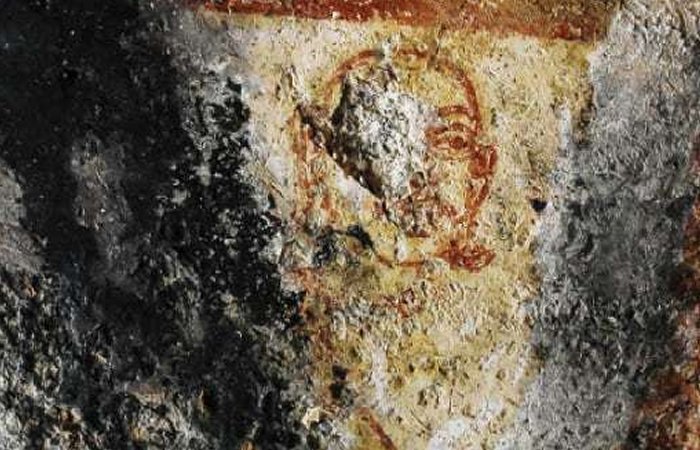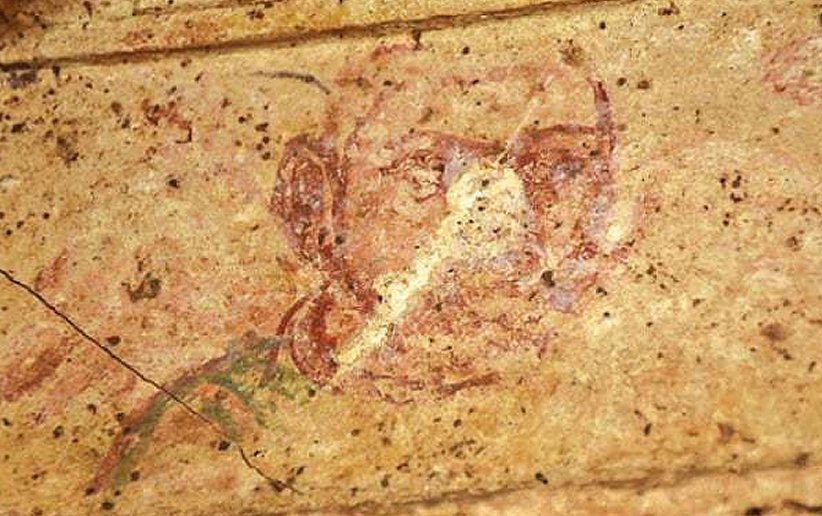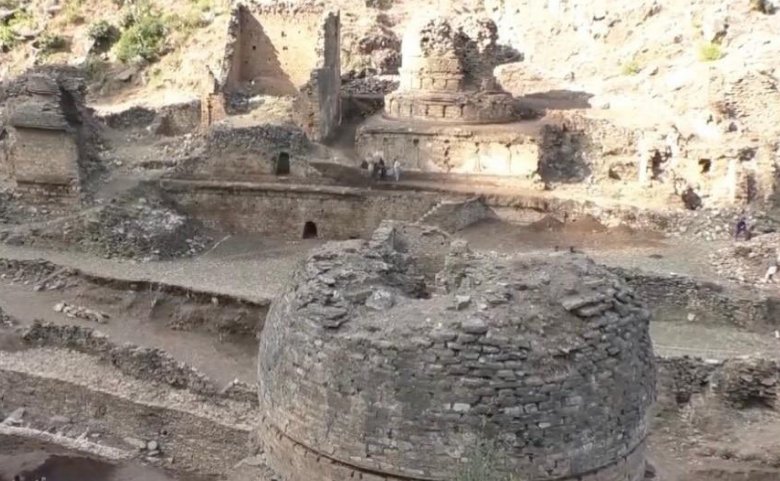Conny Waters – AncientPages.com – Archaeologists in the northern area of Swat in Pakistan have discovered a Buddhist monastic and educational complex believed to be between 1,900 and 2,000 years old.
The largest known complex in the area, its age puts it in the era of the Kushan empire, which controlled the area as well as much of modern-day Afghanistan, Pakistan, and northern India from 30–375 CE.
 Ancient Buddhist complex – unique murals. Image credit: globalvillagespace.com
Ancient Buddhist complex – unique murals. Image credit: globalvillagespace.com
The site was originally discovered in the 1930s by Italian archaeologists, but digging there ended before major discoveries could be made. The archaeological team from Pakistani returned to the site last year.
See also:
Temple Of Lord Vishnu Dated To Hindu Shahi Dynasty Unearthed In Pakistan
The site is believed to include a vast monastic complex, complete with stupas, viharas, a school, and meditation halls in the center of the small valley, along with small cells higher in the mountains where monks lived in relative isolation.
“Apart from this complex, you can see the ᴀssembly hall over there, which was used for different meetings,” said Saqib Raza, from KP’s Directorate of Archaeology and Museums who is lead archaeologist on the excavation.
 Image source: globalvillagespace.com
Image source: globalvillagespace.com
They also used to teach philosophy here. This was a schooling area, a kind of educational insтιтution for the area and for the region.”
The archaeological team also found a piece of a coin and hope to discover other artifacts as the excavations continue. Raza also said that “the team has also discovered some rare fresco paintings belonging to the first century from the Abbasahib-China Buddhist site in Barikot during our recent exactions.”
The paintings are in different poses including the namaskar pose. Six of them are visible and intact,” as cited by Buddhistdoor Global.
 source
source
According to Dr. Abdul Samad, director of archaeology and museums, the discovery of murals is unique. He suggested that it is the first time that archaeologists have found intact fresco paintings at an archaeological site of the Kushan dynasty in the Gandhara civilization.
A new dynasty, known as the Kushan, was subsequently founded by one of the five chieftains among whom Bactria was divided.
The Kushan kingdom was powerful and extended its power and territories southward, eastward into India, and northward into Central Asia. The Kushans managed to survive for three centuries, until forces from Persia, Pakistan, and India all re-conquered their old territories. In consequence, the Kushan Kingdom’s power declined.
Gandhara’s existence is attested since the time of the Rigveda (c. 1500 – c. 1200 BC), as well as the Zoroastrian Avesta, which mentions Gandhara as the sixth most beautiful place on earth created by Ahura Mazda.
Mentioned in Buddhist sources, Gandhara,was conquered by the Achaemenid Empire in the 6th century BC, and later, in 327 BC, was conquered by Alexander the Great. It subsequently became part of the Maurya Empire and then the Indo-Greek Kingdom. Gandhara spread Buddhism to Central Asia and East Asia. It was also a center of Hinduism.
Written by Conny Waters – AncientPages.com Staff Writer





